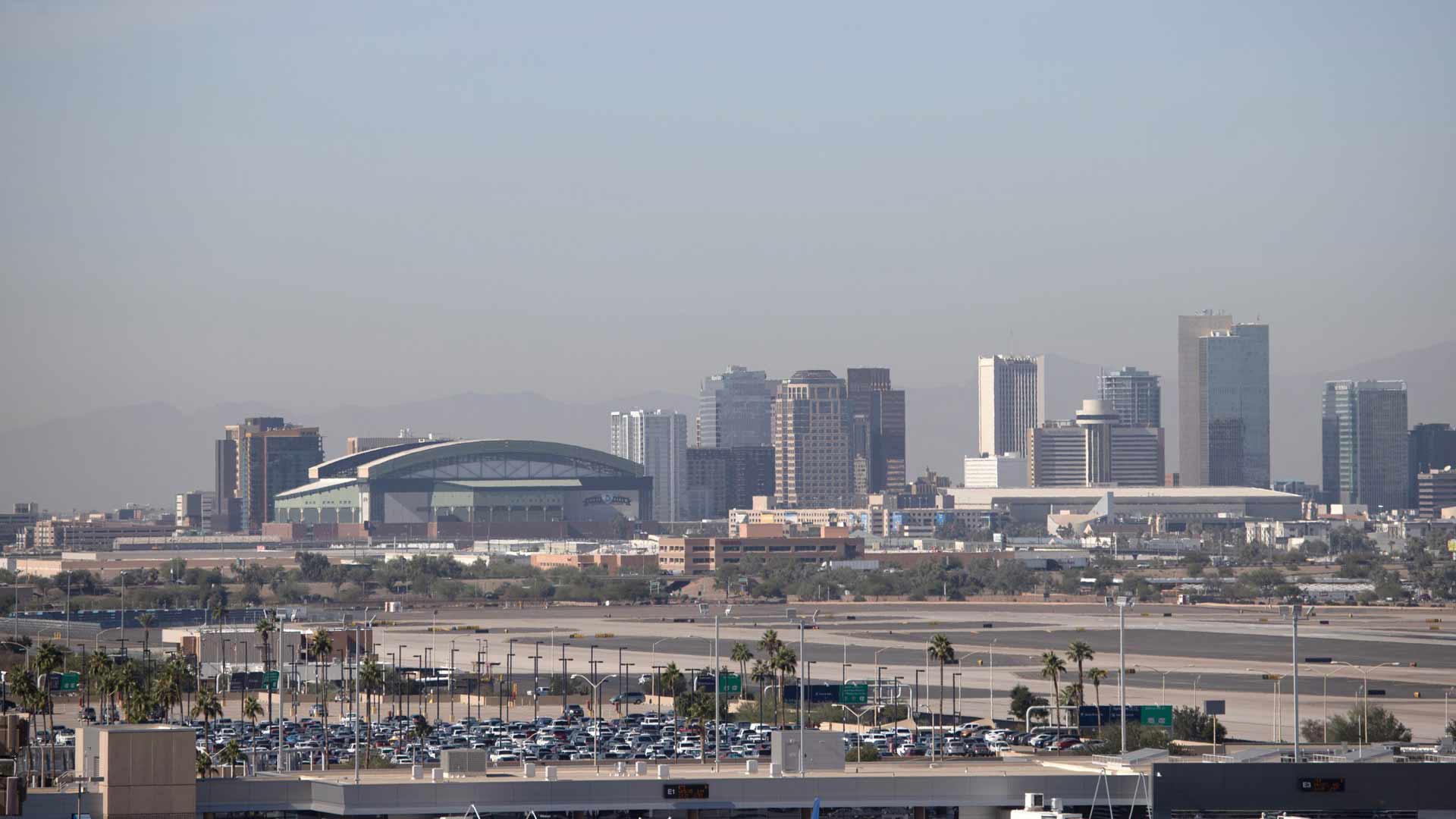 Phoenix officials are seeking public input on updates to the city’s Climate Action Plan, as the region grapples with human-caused climate change, including poor air quality, drought, and extreme heat.
Phoenix officials are seeking public input on updates to the city’s Climate Action Plan, as the region grapples with human-caused climate change, including poor air quality, drought, and extreme heat.
Phoenix wants to be more ambitious with its climate action plan, and city officials said they want residents to tell them the best way to get there.
“You have more power than you realize” to shape the changes being made, said Nancy Allen, environmental programs administrator for the city. “We keep track of all your questions, and we are listening to you.”
Allen was speaking at a public meeting Tuesday night on the city’s Climate Action Plan, which was last updated in 2021. This week’s meeting aimed to get public feedback for a draft update that will be released later this summer, followed by more hearings and an updated plan by the end of the year.
The plan currently calls for several light-rail extensions and a net-zero energy grid by 2050, among other goals. Allen also emphasized the benefits of the planned transport projects, which are meant to lower single-occupancy car travel from the current 85% of trips to 60% by 2050.
It wasn’t the larger projects, however, but the local issues that held the attention of Phoenicians at the meeting.
Speakers raised concerns about neighbors using too many pesticides in their gardens, the equity of public transit planning, and the lack of tree shade on many walkways. One resident asked about the future rollout of micro-mobility schemes, like e-scooters and e-bikes.
Allen said the major focus for micro-mobility is downtown at the moment, but the city is seeing success there, so it will no doubt be rolled out to other areas.
One resident was concerned about the potential for increased water rates.
“They’re a big stick and I’m wondering where the carrot is?” he asked, noting that if water gets more expensive, it will discourage people from planting trees, thereby leading to even more heat on the streets.
Phoenix Climate Program Manager Joshua Uebelherr said increasing tree coverage is something the city wants to do, but there are challenges around finding the best placement for trees, with concerns about their roots and providing space for people with visual impairments.
Uebelherr pointed to a ranking that showed the most water-efficient trees to plant and said the city would be considering financial assistance to encourage the right tree planting in the right areas.
One man asked where the expected emissions savings are going to come from, noting that much of the progress touted by the city to date has come from the 2019 closure of the Navajo Generating Station, a coal-fired plant in northeastern Arizona.
“Where are you going to find another environmental disaster to shut down like that?” he asked.
“We have plenty of disasters,” said Allen, drawing a laugh from attendees before raising the imminent transition of the city’s bus fleet away from fossil fuels.
“Hydrogen is a big deal because we don’t have the range on electric buses yet,” she said, but emphasized that electric is the way the city would like to go in time.
Uebelherr gave an overview of the progress the city has made since the 2021 update of the plan, touting the fact that Phoenix has cut emissions despite population and economic growth. He also highlighted major projects like the Sky Train extension to the airport and the Drought Pipeline Project, connecting north Phoenix with alternative water sources. Both projects were completed in December.
He said there was a large public appetite for climate action, highlighting figures from the 2021 document that showed 77% of Phoenicians support climate solutions that improve air and water quality, while 76% were motivated to leave a world where future generations can thrive and 65% wanted a reduction in fossil fuel reliance.
Allen said Bus Rapid Transit (BRT) would revolutionize travel for Phoenicians, cutting a current two-hour trip through downtown to 20 or 30 minutes. BRT is a transit system that promises the benefits of light rail at a much lower cost with dedicated bus lanes for high-capacity buses.
The 2021 Climate Action Plan calls for the development of 75 miles of BRT in Phoenix and the expansion of the current 20-mile light-rail line to a 42-mile system by 2050.
“Every part of our lives has a climate component,” said Allen.
The next public meeting on the plan will take place in the Burton Barr Library in Phoenix on June 7 at 5 p.m. More details are available at https://www.phoenix.gov/oep/cap.

By submitting your comments, you hereby give AZPM the right to post your comments and potentially use them in any other form of media operated by this institution.